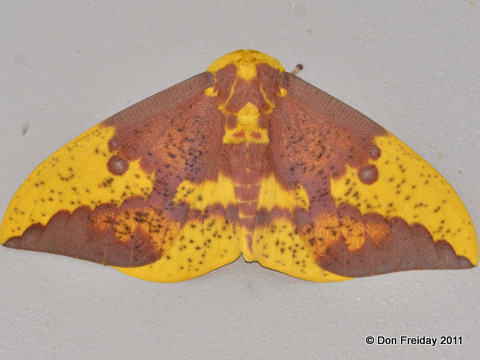Why am I doing this, this weekly Belleplain Forest immersion, when they're finding Mississippi Kites and even Magnificent Frigatebirds in Cape May?
It seems a small enough commitment, in this world rapidly and randomly deconstructing itself, to be with a place every week, once a week, for a spring complete. And so I beat the sun to the forest this final time, though still not early enough to hear the Whip-poor-wills I know are there. The warm air flowed soothingly over me as I cycled through the now familiar archways of trees, and the birds sang, but less frantically, stating the facts now, not shouting calls to love or arms.
[Mr. Squirrel meets Mrs. Box Turtle. . . I've rescued multiple turtles of 4 species (Box, Snapping, Painted, and Diamondback Terrapin) in the past week, all females apparently seeking suitable places to lay eggs.]
After the Black-and-white Warbler cooperated so nicely, I left the birds to their own devices, which for most right now means incubating or feeding young. Two Louisiana Waterthrushes continue to sing, one upstream from the Sunset Road bridge, but Kentucky Warblers again were silent, but likely not absent. There's a Kentucky at our MAPS station in Bear Swamp that sings, oh, maybe 10-15 times in a 6 hour morning. Likely the Belleplain birds are similarly present, and similarly busy with other things.
8 calling Yellow-billed Cuckoos seemed a solid showing, and one teed up remarkably high in a dead treetop, for all the world to see - a world that, at 6:00 a.m., consisted of me. 6 Summer Tanagers raised eBird's filter's eyebrows - but honest, there were at least that many! Frank's Road is always good for SUTA, but find woods that look like that elsewhere, and you'll find the tanagers. A singing Yellow-throated Vireo behind one of the houses along Sunset Road was a nice find; this species is a scarce breeder in Belleplain.
[Chipmunks are scarce in south Jersey, probably because creating a burrow sturdy enough to last the winter is a bit of a challenge in sandy soil. This was one of two along Sunset Road west of the bridge.]
I'll post the full list from today below. This is it for Belleplain for me, a bit of a shame since it seems like a 17-year cicada emergence may be in the offing - strange, long hums in the woods now, perhaps soon deafening.
My next blog will likely come to you from Alaska, where Mark Garland and I are leading a tour. Plane leaves tomorrow. . .
[Diversity in all forms, a hallmark of healthway forest anywhere, not to mention food for Whip-poor-wills and Chuck-wills-widows. I've taken many a picture like this in the tropics, but these moths lingered on an outbuilding near Belleplain State Forest Headquarters today, in our own Cape May County.]
[One of the big silk moths, an Imperial Moth, about 4 inches across. This species is in decline, perhaps in part because of Gypsy Moth spraying. The larvae feed on oaks, maples, sweet gum, and pine - sounds like Belleplain to me.]
[Another big beauty, the Luna Moth.]
Here's the final Belleplain list:
Location: Belleplain State Forest
Observation date: 5/30/11
Notes: 12 miles by bike, 5:30-11:00 a.m. Clear, 60-75, light wind.
Number of species: 50
Canada Goose 10
Turkey Vulture 1
Red-tailed Hawk 1
Laughing Gull 50
Great Black-backed Gull 1
Mourning Dove 8
Yellow-billed Cuckoo 8 clicked
Ruby-throated Hummingbird 3
Red-bellied Woodpecker 2
Downy Woodpecker 2
Hairy Woodpecker 2
Northern Flicker 1
Eastern Wood-Pewee 20
Acadian Flycatcher 12
Eastern Phoebe 2
Great Crested Flycatcher 12
Eastern Kingbird 3
White-eyed Vireo 4
Yellow-throated Vireo 1 Sunset singing near houses e of bridge
Red-eyed Vireo 20
Blue Jay 2
Purple Martin 2
Carolina Chickadee 5
Tufted Titmouse 10
White-breasted Nuthatch 1 trail south of sunset east of bridge near field
Carolina Wren 1
Blue-gray Gnatcatcher 15
Wood Thrush 8
American Robin 10
Gray Catbird 3
Cedar Waxwing 10
Blue-winged Warbler 1
Yellow-throated Warbler 12
Pine Warbler 10
Prairie Warbler 2
Black-and-white Warbler 8 1 male FY
Worm-eating Warbler 15
Ovenbird 60 clicked
Louisiana Waterthrush 2
Hooded Warbler 8
Eastern Towhee 4
Summer Tanager 6
Scarlet Tanager 5
Northern Cardinal 4
Blue Grosbeak 1
Indigo Bunting 1
Common Grackle 4
Brown-headed Cowbird 6
American Goldfinch 2
House Sparrow 2
[Reconstructing the world, for just a moment anyway. Mountain Laurel perfumes the air and blooms in the background.]
































